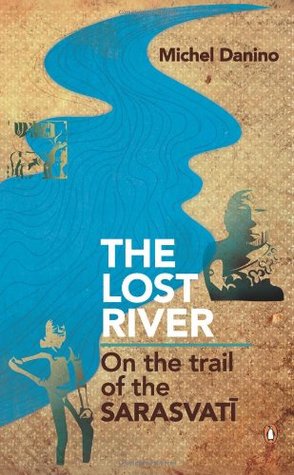The Lost River: On The Trail of the Sarasvati by Michel Danino - Review by Abhishek Desikan
The river Saraswathi has been in the collective memory of the Indian civilization since time immemorial. Revered as one of the mightiest rivers in the Rig Veda and prayed to as Goddess Saraswathi, it has transcended generations across millennia to remain in our consciousness. In this landmark work, Michel Danino tells us the gripping tale of the origin, rise, and fall of this mighty river and its renaissance in the 21st century.
The book is titled “The Lost River” precisely because it was lost for millennia. British archaeologists stumbled upon bricks and structures which belonged to the highly sophisticated cities built by the people of the Indus Valley Civilization. This prompted a series of excavations, which led to a new understanding of our own history.
The author leaves no stone unturned in terms of the research he’s done to present the facts in this book. Every aspect from its origin, possible reasons for its decline due to Sutlej and Yamuna being diverted, the various phases of the Harappan civilization - early, mature and post-Urban, the comparison between the Rig Veda vis-a-vis the geography of the landscape, evidence from numerous archaeological excavations, both Indian and foreign, planning of the cities and the consistency of their ratios across the region, flora and fauna.. the list goes on!
The Harappan lifestyle was remarkably egalitarian, unlike contemporary civilizations in Mesopotamia and Egypt. They had flourishing trade from their numerous ports. The lack of evidence of invasion from the east decimates any possibility of the Aryan Invasion Theory. He also lucidly explains the unbroken continuity from the Harappan civilization to that of the Gangetic one. Some of these examples which were fascinating to me were the kolam art forms, the seals carrying Pashupati and the bull, and the ratio of buildings that continue to this day.
The great mystery surrounding the Harappan and the Vedic civilization is that the former had great art, trade, and structures while the latter had a great literary tradition. While the Vedas speak of the geography, which correlates to the Harappan society, some unclear aspects require multi-disciplinary research. Only then can we conclusively answer the question of whether they were one and the same.
We are also presented with counterclaims on the existence of the Saraswathi river, and why they are incorrect. With detailed maps and pictures, the book makes for a vivid reimagining of the life and times of the Indus or rather Saraswathi Valley people and provides a comprehensive and analytical view into our past. A must-read for everyone who wishes to know the true origins of the Indic civilization.

Originally published here.